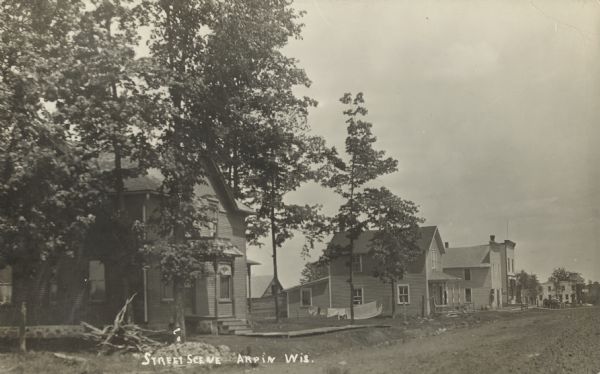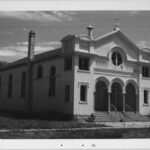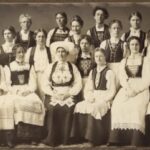Today the largest Jewish communities in Wisconsin exist in the cities with the highest populations. However, this was not always the case. Around 1900, there were many new and budding Jewish communities across the state in places like Sheboygan, La Crosse, and Eau Claire. There were also smaller, rural communities emerging like the Arpin Settlement in Wood County.
On the East Coast, the Industrial Removal Office, created by German Jews, organized the relocation of newly arriving Jewish immigrants to the interior and western regions of the United States. Many of these immigrants settled in Wisconsin. Adolph W. Rich, a Hungarian Jew and founder of the A.W. Rich Shoe Company in Milwaukee, shared the Industrial Removal Office’s fear of an uptick in antisemitism as Jewish communities in cities grew. To counteract this threat, Rich and other Milwaukee business leaders helped establish rural Jewish communities across the state.
Rich sponsored the Arpin Settlement of Jewish Farmers, which was composed of 70-80 Jews living in the small town of Arpin in Wood County. He envisioned creating an insular settlement of Jews who could live off the land rather than pursuing life in the city. Many of the Eastern European Jews came to the United States due to persecution in their home countries, and Rich believed that he could turn these refugees into farmers in the heart of the Midwest.

Starting in 1904 with just five families, the Arpin Settlement of Jewish Farmers began farming the region, planting a variety of crops including potatoes, corn, cucumbers, and other vegetables. By 1906, the settlement’s population had grown to fourteen families, and by 1915 they established the first and only synagogue in Wood County.
Rich remained close to the settlement by visiting the new farmers often, listening to their concerns, and solving interpersonal disputes between settlers. Through the efforts of Rich, the settlement grew into a real community. If a member of one family was sick, neighbors would step in to help clear wood, harvest crops, or take over farm chores.
Despite some initial success, however, the settlement began to fall apart by the 1920s. Just five families remained after 1922, and there were only two families left in Arpin by 1940. The settlement dissolved for a variety of reasons, including a lack of suitable secondary education facilities, limited contact with other Jewish communities, and a fear of intermarriage. Since there were only fourteen families at the height of the colony, the community quickly ran out of suitable Jewish marriage options for their children. Unwilling to accept intermarriage with Christians in Arpin and other communities, the Jews of Arpin slowly began leaving after 1920. Max Leopold was the last member of the settlement to leave Arpin in 1958, ending Rich’s experiment and Jewish life in the town.
Written by Jack Styler, July 2020.
ORAL HISTORY: For more information about the community in Arpin, visit the Wisconsin Sound Archive for the oral history interview with Dave Wolf: Dave Wolf discusses Jewish community in Arpin (May 27, 1954)
SOURCES
“The AJHS Manuscript Catalog — Industrial Removal Office.” JewishGen.com. Accessed June 8, 2020.
Joel Alpert, “Sheboygan, Wisconsin.” Jewishgen.org. Accessed May 26, 2020. https://kehilalinks.jewishgen.org/Sheboygan/Sheboygan.html
“Lakeland Manufacturing Co. is Making Excellent Strides.” Sheboygan Press, 31 July 1942.
Robert Rockaway, “How the Industrial Removal Office Sent Jews to America’s Heartland.” Tablet Magazine, 16 May 2018. Accessed June 18, 2020. https://www.tabletmag.com/sections/news/articles/industrial-removal-office.
Wisconsin Historical Society, “Jews in Wisconsin.” Historical Essay. 3 August 2012. https://www.wisconsinhistory.org/Records/Article/CS1872.
Sherry Zander, “Bratwurst Meets Borscht.” Smallsynogogues.com. Accessed May 26, 2020. https://smallsynagogues.com/sheboygan.htm





